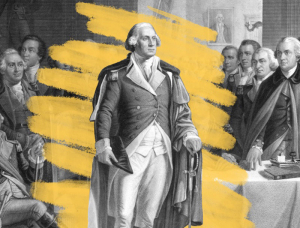Blackbeard’s ship sunk off the coast of North Carolina.
Perhaps the most famous of the characters who defined the golden age of piracy, Blackbeard (born under the name Edward Teach or possibly Thatch) earned his moniker for the prominent coal-black bush that overtook his jawline and neck. Prone to braiding this growth into pigtails, tied with colorful ribbons, he also tucked lighted fuses under the brim of his hat, producing a supernatural haze of smoke to accompany his fierce gaze.
Unsurprisingly, Blackbeard struck terror into the hearts of sailors as he guided the crew of the Queen Anne’s Revenge through the Caribbean for a brief period of the early 18th century, plundering the valuables and useful crew members of other vessels as he pleased. The fearsome captain even managed to blockade the port of Charleston, South Carolina, in May 1718 to obtain a desired chest of medicine. But for all his mastery of the high seas, the acclaimed pirate wasn’t immune to navigational blunder: Shortly after the blockade, the Queen Anne’s Revenge was grounded on a sandbar in what is now the Beaufort Inlet off the coast of North Carolina, forcing the captain and his men to abandon ship before it was completely swallowed up by the waves.
Or perhaps the ship was wrecked on purpose? A fellow captain who traveled with Blackbeard indicated as much, suggesting the pirate wanted to break up a company that had swollen to more than 300 men, and later examinations revealed the Queen Anne’s Revenge was in poor shape by the time it was abandoned. At any rate, Blackbeard himself didn’t survive for much longer, as he was killed in battle in November 1718. Yet his fame endured, thanks in part to the rollicking adventures featured in the 1952 movie Blackbeard the Pirate. A half-century later, Blackbeard enjoyed a revival with the discovery of the Queen Anne’s Revenge wreckage in its watery grave, proving that certain swashbuckling legends are simply too compelling to wash away.







